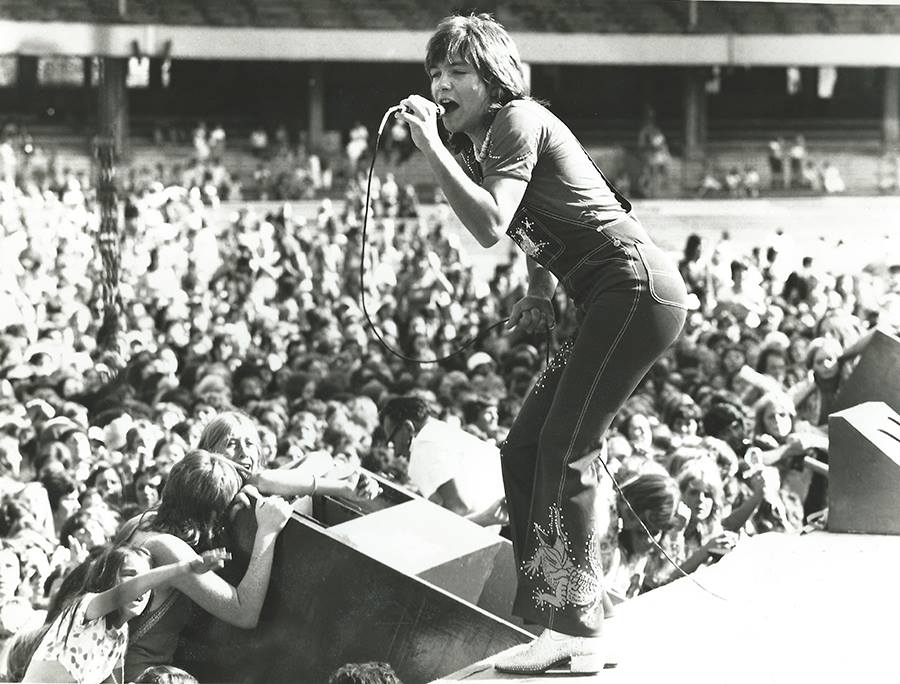
A warm-blooded plea wrapped in blue-eyed soul — “I’ve Been Lonely Too Long” (titled “Lonely Too Long” on the LP) is where David Cassidy lets a classic confession breathe again, slower, tender, and newly his.
Set the record straight at the top. David Cassidy cut “Lonely Too Long” for his second solo album, Rock Me Baby, released on Bell Records in October 1972 and sequenced as track two—a prime, early-side statement of intent. Produced by Wes Farrell, the set leans into R&B and blue-eyed-soul colors, with first-call Los Angeles players (drummers Hal Blaine and Jim Gordon; bassist Joe Osborn; guitarists Larry Carlton, Dean Parks, Louie Shelton; and arranger/keyboardist Mike Melvoin) giving Cassidy an elegant, unpushy frame. Cassidy’s reading was not issued as a single, so it has no chart peak of its own; instead the album carried it into a wide audience, peaking at No. 41 on the U.S. Billboard 200 and No. 2 on the U.K. Albums Chart across late 1972–spring 1973.
The song’s bones are older and sturdy. “I’ve Been Lonely Too Long” was written by Felix Cavaliere and Eddie Brigati and first released by The Young Rascals in 1967, where it rose to No. 16 on the Billboard Hot 100 in the U.S. and No. 7 in Canada, and appeared that same year on the Rascals’ album Collections (there titled “Lonely Too Long”). Cassidy keeps the title the LP used and, more importantly, keeps the song’s moral center intact: a rueful self-inventory about how isolation can make a heart forget its natural size.
What Cassidy changes—beautifully—is the temperature. Where the Rascals’ single rides a brisk, church-basement groove, Cassidy eases the tempo and clears space around the vowels so the lyric can land like a conversation you’ve been postponing. Wes Farrell’s production resists every early-’70s temptation to gild the moment; the rhythm section strolls, guitars glow rather than bark, and Melvoin’s keys/strings shade the corners without ever stealing the lamp light. You can hear the Wrecking-Crew precision, but no one rushes him. The effect is of a young singer stepping out of the pin-up glare and into a quiet room where adult feelings have time to speak.
For older listeners, that small shift matters. The lyric’s plainest truth—I’ve been lonely so long I don’t remember how not to be—can be shouted, but it’s more honest when it’s confided. Cassidy’s phrasing leans toward speech: he eases into lines, lets a consonant soften, then lifts the melody just enough to admit what pride won’t. In that restraint you hear a man moving past the stage-door pose of his television fame. On Rock Me Baby the big attention-getters—“Rock Me Baby”, “How Can I Be Sure”—do their sparkling work; then “Lonely Too Long” arrives to tell you who’s really singing: someone willing to wear vulnerability without spectacle.
The track also fits the album’s broader argument. Cassidy and Farrell seeded Rock Me Baby with smart covers that speak to taste, not trend—two Rascals gems (“How Can I Be Sure” and this one), “Go Now” from the Larry Banks/Milton Bennett songbook—and set them alongside Cassidy’s own pages (“Two Time Loser,” “Song for a Rainy Day”). The sequencing is deliberate: the familiar invites you in; the originals and quieter readings keep you there. It’s a persuasive case for David Cassidy as an interpreter in the grown-up pop tradition—curating, not merely coasting.
And because you asked for the chart picture as it actually was at release: Cassidy’s version did not chart as a stand-alone single in 1972. Its parent album did the public work—U.S. No. 41; U.K. No. 2—while the original 1967 single by the Young Rascals remains the charting hit (U.S. No. 16; Canada No. 7). Those facts matter because they frame how to listen: you’re not hearing a chart bid; you’re hearing a singer choose feel over flash, trusting that a careful, mid-tempo confession would outlast a quick trophy.
Return to “Lonely Too Long” now and notice what a little air can do. The band walks instead of struts; the voice sits close, unforced; the chorus doesn’t demand a sing-along so much as offer a hand. For many of us, that’s exactly how the song earns its place among Cassidy’s keepers. Beneath the posters and the headlines was always this quieter instinct—to take a good song, lower the lights, and sing it the way the heart actually talks when no one is watching. On a gray afternoon, the track still does what it promised in 1972: it remembers you back to yourself and leaves the room a touch warmer than it found it.